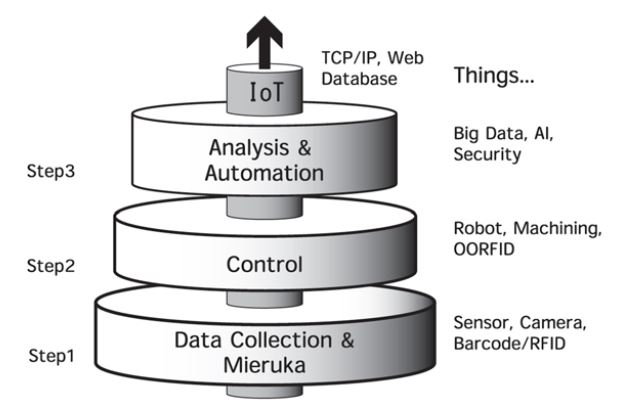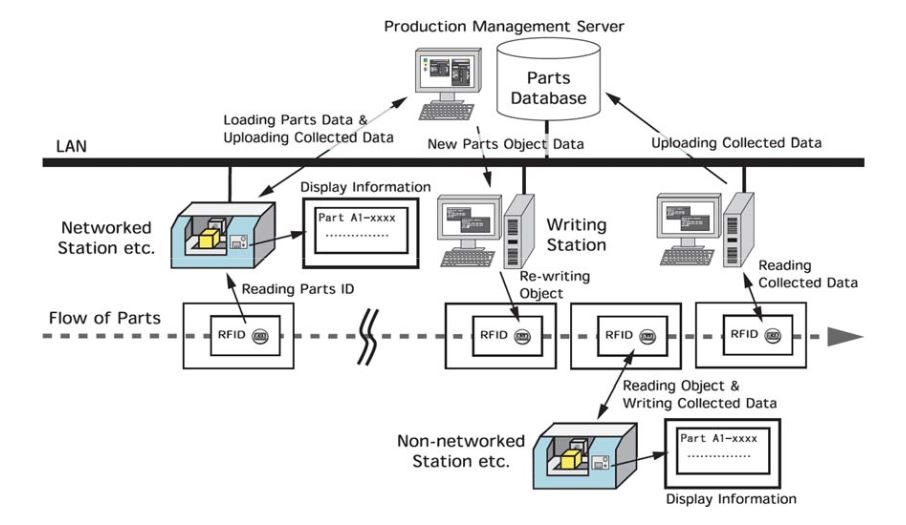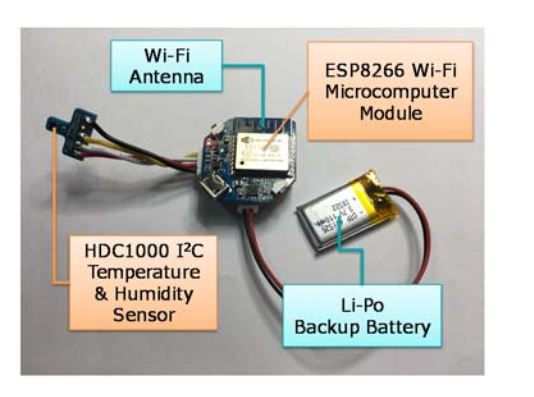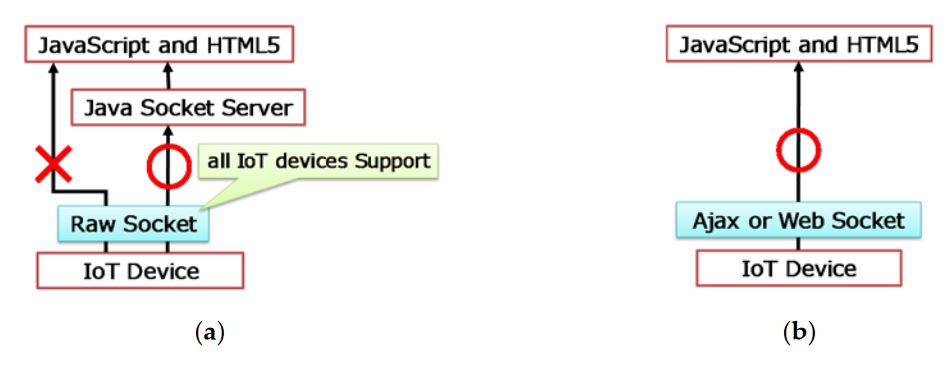ABSTRACT
The Internet of Things (IoT) has increasingly become important in industry. Connectivity over the internet of not only people but also devices (such as sensors, appliances, machines, robots, and vehicles) is leading to a paradigm shift in manufacturing. The Japanese government recognizes this and has stated that IoT connectivity and the methodologies to exploit it are paramount for Japanese industry. Currently, the necessary changes have been realized in large Japanese companies; however, implementation in smaller companies has been lagging, despite the advantages of introducing IoT technologies, due to the high cost.
The objective of this research is to suggest a design concept which combines IoT and object-oriented radio frequency identification (RFID). IoT technology is used for collecting, analyzing, and managing data, and an object-oriented RFID system is used as a control process in manufacturing systems. In previous research, the object-oriented RFID system was shown to provide flexible management through the use of a variety of OORFID tags. The current research extends this by introducing object-oriented RFID into IoT systems to improve the flexibility in the manufacturing systems. For the verification of this concept, an experimental IoT system using object-oriented RFID was designed and implemented.
IOT AND OORFID

Figure 3. Internet of Things (IoT) Three Steps and Things in Manufacturing
In the IoT system, the various things are connected together. However, the connecting itself brings only a few advantages. It is very important how data is collected, processed, and used. The introduction of the IoT to the manufacturing systems has several steps as shown in Figure 3. The first step is the data collection and mieruka. Mieruka is a part of kaizen, and it is the collection of the various data from the IoT devices in order to identify problems and bring them to the foreground. This may use an RFID system to collect data. It also includes a monitoring function. The second one is control. This means controlling devices such as machines and robots through the network.

Figure 5. Typical production control data management system using RFID
Typical RFIDs are used for the management of the products in the same way barcodes are. As shown in Figure 5, an ID in a tag is read by tag readers and is used to access a database on a server computer. Then, the data that is read from the server is transferred through the network system to the machine that uses it. Therefore, the system size tends to be large because we must introduce the tags for each item: the tag readers, the database server computer system with network infrastructure, its software system, and so on.
CONCEPTUAL DESIGN

Figure 9. One application of IoT with OORFID
Figure 9 is an application of this concept. There is a networked area and non-networked area. In the networked area, all data for production is collected directly through the network. For the operation in the non-networked area, control data is stored in an OORFID as object by rewriting in the writing station before the part comes into the non-networked area. Data collection is executed in the non-networked area to rewrite and update the OORFID with collected data. The data in the OORFID is read in a networked area and transferred into the database. This usage is an application of an OORFID as a storage media.
IMPLEMENTATION

Figure 10. IoT element with temperature sensor
Using the assumed previously developed RFID system, it is replaced with the OORFID system. Firstly, a derived class OORFID has been designed from the base class that was normally used in the original system. The difference between the base class and the derived class is a method used for reading the temperature from the IoT sensor (Figure 10) and displaying the measured value as shown in Figure 11.
DISCUSSION

Figure 14. Communication with IoT device. (a) IoT device only supporting raw socket; (b) IoT with Ajax or WebSocket
To interface with IoT devices, the HTML5 specification provides the WebSocket function. However, currently there are few IoT devices that support WebSocket. Since all IoT devices support a TCP/IP or UDP/IP raw socket control at least for the Internet connection, the initial implementation used the Java socket server to allow communication between the IoT device and the JavaScript and HTML5 programs as shown in Figure 14a.
CONCLUSIONS
In this research, a conceptual design that introduces OORFID to a manufacturing information system connected to the IoT was described. In this design concept combining the IoT and OORFID, the IoT technology is used for collecting, analyzing, and managing data; and the OORFID system is used for process control to improve the flexibility in the manufacturing systems. For the verification of this design concept, an experimental RFID-based manufacturing information system with an IoT element was redesigned.
As a proof of concept, a scenario was assumed where mieruka is conducted to observe measurement values obtained from an IoT sensor. Following this scenario, the RFID-based manufacturing information system was redesigned to modify the system using a derived OORFID. As a result, it was shown that the OORFID controls the manufacturing information system, in particular the communication with the IoT sensor, and the combination of the IoT and OORFID contributes to mobility and flexibility in software development for the manufacturing information system.
Source: Hiroshima Kokusai Gakuin University
Author: Tamotsu Kamigaki
>> IoT Software Projects for Engineering Students
>> Simple Java Projects with Source Code Free Download and Documentation